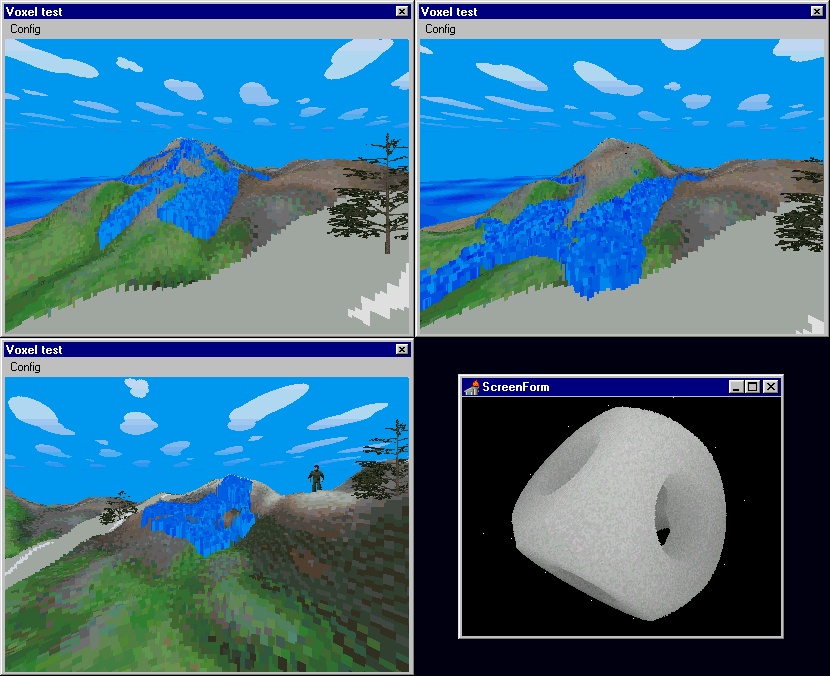 |

Submitted by , posted on 24 November 2000
|
 |

Image Description, by

Greetings, here is my IOTD submission. These pictures show my
"work-in-progress" in
Voxel rendering & manipulation methods.
The first 3 pictures show my heightfield renderer. Nothing really special
compared to other voxel-based renderers, except that you can see my
LiquidMorph
algorithm in action. This algorithm simulates real-time fluid flowing over
landscape areas. The first 2 pictures show what happens after I put a "Water
ball"
on the top of the mountain. LiquidMorph is based on a very basic concept of
fluid dynamics, but is quite CPU-intensive (the screenshots here run at 17-18
FPS
on my Celeron 433). The drawback of this algorithm is that the flowing process
is a bit slow compared to real water flowing, but it is quite suitable for
lava
flowing. And the good point is that it is not limited to a particular area of
the Heightfield, LiquiMorph acts on the whole landscape. So if you dig into
the mountain, it can automaticaly initiate a flowing process.
The last picture shows my real-voxel rendering engine, ie 3D-sprite rendering
algorithm. It is a basic ray-tracing algorithm, without any optimisation of
the voxel data structure, so it is a bit slow (10 FPS at 320x240). But it
allows
realtime sclupting and painting on the shape.
The heightfield renderer will be used as a basis for my next game, probably a
kind of 3D-Worms (where water kills !!). It will be a freeware Delphi
Open-Source
project, so if you are interested in this project please let me know.
Emmanuel ICART.
|
|

